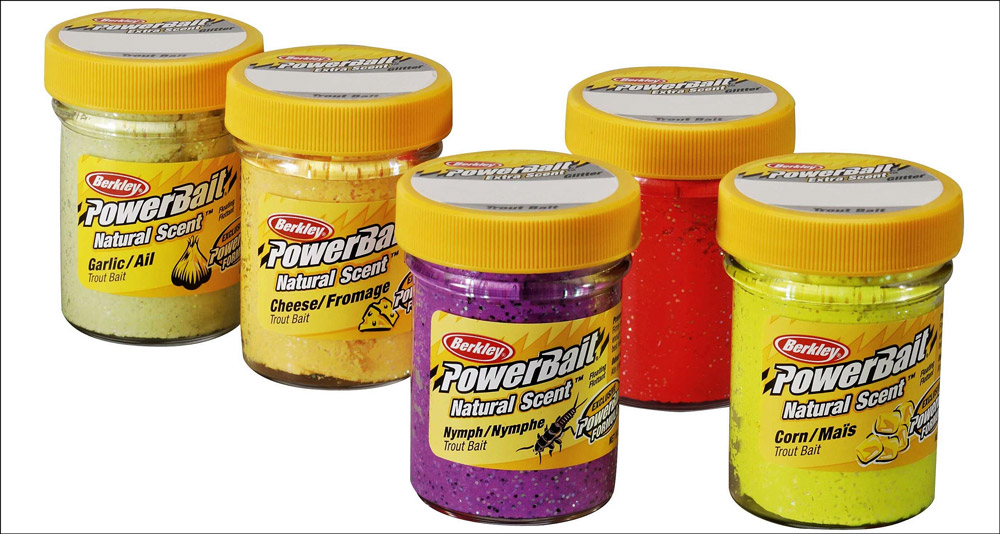
How to Catch Trout with Berkley PowerBait: A Passionate Angler’s Guide
🎣 Fishing: My Passion, My Life – A Glimpse into the Heart of an Angler
Fishing is more than just a hobby, it’s a passion that runs deep. Ever since my first tug on the line, I’ve been hooked. From the break of dawn to the setting sun, there’s no place I’d rather be than on a tranquil river bank, my eyes focused on the water, anticipating the next big catch.
It’s a serene experience, one that helps me connect with nature and myself. Yet, it’s also an exhilarating one, the thrill of the chase, the skill and strategy involved, the victory of finally reeling in a worthy adversary. Each catch, be it big or small, is a trophy of its own, a testament to my patience, expertise, and the joy I find in this age-old pastime.
🐟 Why Berkley PowerBait is My Secret Weapon
Every angler has their secret weapon, that special something that gives them the edge. For me, it’s Berkley PowerBait. I’ve used countless types of bait in my angling journey, but none have proven as consistently effective as Berkley PowerBait. Its allure for trout is undeniable, leading to more catches and more memorable fishing moments.
Whether I’m fishing in a bustling lake or a quiet stream, Berkley PowerBait never lets me down. It’s like a magic lure, almost irresistible to trout, drawing them in with its unique scent and flavor. And it’s not just about the increased catch rates – it’s about the confidence it gives me every time I cast my line, knowing I have a trusted ally at the end of it.
🔶This guide is more than just a rundown of techniques. It’s a glimpse into my fishing adventures and the knowledge I’ve gathered over the years, specifically the effectiveness of Berkley PowerBait. I invite you to dive in, discover my secrets, and hopefully, they will lead you to your next great catch. 🏆
Understanding the Prey – The Trout
🐟 Trout: Unveiling the Mysteries of these Aquatic Wonders
In the world of angling, knowledge is power. And when it comes to catching trout, understanding your finned foe is half the battle. So let’s take a deeper dive into the world of trout.
Trout, a favorite among anglers worldwide, are a diverse species found in a wide range of habitats. They prefer cool, clear waters, making their home in everything from small streams to large lakes. Their environments often teem with rocks or underwater vegetation, providing shelter from predators and a hunting ground for their prey.
Trout are opportunistic feeders with a broad diet, eating everything from smaller fish to insects and invertebrates. They can be most active during dawn and dusk, but their feeding habits can shift with changes in temperature, water conditions, and food availability.
Now, you may ask, “Why is understanding trout so crucial?“ 🤔
Targeting Trout: Why Knowing Your Prey Matters
Simply put, knowing your prey is the key to predicting their behavior. Understanding where trout live, what they eat, and when they’re most likely to feed can greatly increase your chances of a successful catch.
By knowing their habitat, you can focus your efforts on the most promising parts of a lake or river. Knowledge of their diet can inform your choice of bait, leading to more enticing offerings. And understanding their feeding patterns can tell you the optimal times to cast your line.
🔶Fishing isn’t just a game of chance; it’s a sport of strategy. And the more you know about trout, the better your strategy can be. This is where Berkley PowerBait comes into the picture. Its design and composition appeal directly to the preferences and habits of trout, making it a potent tool in any angler’s arsenal. But more on that in the next section. For now, let’s reel in this part with a reminder: Know your fish to catch your fish. 🎯
Berkley – The Angler’s Trusted Companion

🎣 Berkley: A Legacy of Quality and Innovation in Fishing Tackle
As a professional angler who’s cast lines in waters around the globe, I’ve always had a partner by my side – Berkley. An American pioneer in the fishing industry, Berkley has gained the trust of professional fishermen like myself, owing to its unwavering commitment to quality and innovation.
Their repertoire of fishing tackle, rods, fishing carts, particularly their enticing soft baits, has turned the tides in favor of anglers. But the jewel in Berkley’s crown is undeniably the PowerBait series.
This series hosts an array of potent attractants that can seamlessly blend with baits from diverse manufacturers, amplifying their appeal to the underwater dwellers.
🐟 Berkley PowerBait Silicone Baits: The Irresistible Underwater Temptation
However, the star of the show is the Berkley PowerBait silicone-based baits, already teeming with an irresistible attractant. Upon submerging in the water, these baits emit an aroma potent enough to entice a wide variety of fish. From the elusive eel to the spirited trout, from the mighty catfish to the majestic salmon, no species can resist the allure of this aromatic siren.
But Berkley PowerBait’s brilliance doesn’t end with luring the fish; it ensures they stay for the main event. These silicone-based baits have a soft texture, simulating natural prey, which fish savor, giving the angler a generous window to hook their catch.
🔶It’s not just about the scent and taste; it’s about the complete sensory experience that Berkley PowerBait offers. It’s no wonder then that this bait has been my trusted ally on many successful fishing adventures. As we move on, we’ll delve into the other aspects that make fishing with Berkley PowerBait a fulfilling experience. 📖
🎦Video YouTube: Catching Fish with PowerBait in 3 MINUTES – 5 Things Every Beginner Needs
The Power of Berkley PowerBait
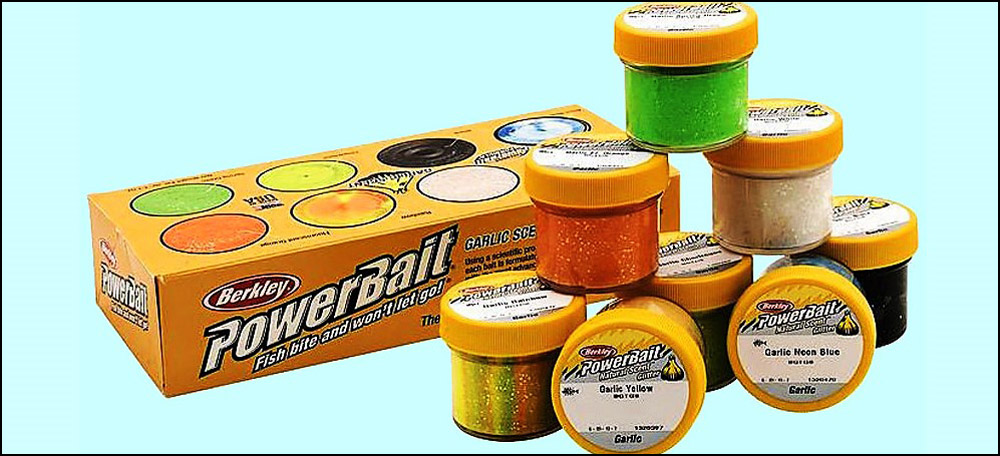
🎣 The Irresistible Pull of Berkley PowerBait: What Makes It So Effective?
For a moment, let’s switch our focus from the natural world of trout to the scientific world of bait. Not just any bait, but the ultimate game-changer in the fishing world: Berkley PowerBait.
At the core of PowerBait’s irresistible allure to trout is its uniquely crafted formula. The wizards at Berkley spent years studying the dietary preferences and sensory abilities of trout to create a bait that appeals to their senses. The result? A substance that not only mimics the scent and flavor of real food but also has a soft, malleable texture that feels natural to the fish.🔬
When a trout bites into a nugget of PowerBait, it’s not just the scent or taste that convinces them to hold on; it’s also the lifelike texture that makes them believe they’ve found a genuine meal. This gives you more time to feel the bite and set the hook, leading to more successful catches. 🎯
Tales from the Riverbank: My Triumphs with Berkley PowerBait
Now, let’s leave the lab and head back to the water’s edge. As an angler, I’ve had my fair share of days where the fish just weren’t biting. We’ve all been there. But then came along Berkley PowerBait, and the game changed forever. 🔄
One memorable day stands out. I was at my favorite fishing spot, the morning mist still hovering over the water’s surface. The trout were proving elusive, but I had my secret weapon at hand – Berkley PowerBait. As I molded the vibrant nugget onto the hook and cast the line, I felt a wave of anticipation. Within moments, I felt that telltale tug – a hungry trout had taken the bait! 🐟
That was the first of many successful fishing trips powered by Berkley PowerBait. It’s not just about the increased catches; it’s also the confidence it instills in you, knowing that you have a highly effective tool that gives you an edge.
🔶But don’t just take my word for it. Try Berkley PowerBait for yourself, and experience the thrill of reeling in trout more consistently. In the next sections, we’ll delve deeper into the practical aspects of fishing with PowerBait, from choosing the right gear to perfecting your casting technique. 🎣
What Is PowerBait?
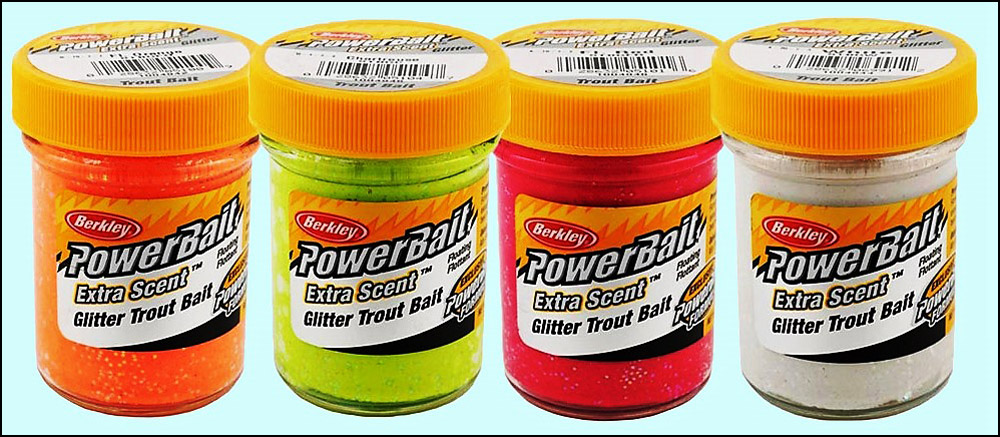
PowerBait is a line of fishing baits developed and produced by Berkley, a renowned American fishing tackle company. It’s designed to help anglers of all experience levels have a successful fishing experience.
The primary selling point of PowerBait is its scent and flavor, which are engineered to attract and encourage fish to hold onto the bait. This gives anglers more time to set the hook and reel in their catch. PowerBait products are available in a variety of forms, including dough, pellets, nuggets, and soft plastic bait, and they’re designed to mimic the look, smell, and taste of various prey that fish feed on.
A key feature of PowerBait is its formulation. Many PowerBait products are made from a soft, durable material that allows them to be molded or shaped by hand. This versatility means that anglers can adapt their bait presentation to different fishing conditions and target species.
Berkley’s PowerBait is especially popular among trout anglers. The unique scent and taste profile of the bait, combined with its natural feel, make it incredibly attractive to trout, increasing the chances of a successful catch.
🔶In essence, PowerBait is an innovative product designed to enhance the fishing experience by making it easier to attract and catch fish. Whether you’re a professional angler or a hobbyist, PowerBait can be a powerful tool in your fishing arsenal.
The Perfect Cast – Techniques and Tips
🎣 Mastering the Cast: A Step-by-Step Guide to Casting with Berkley PowerBait
Mastering the perfect cast can be the difference between an ordinary day of fishing and a memorable day of successful trout catches. When using Berkley PowerBait, the casting technique can make all the difference. So, let’s walk through the steps:
- Prepare Your Line: Start by threading your fishing line through the rod’s guides. Attach a suitable hook and then mold a nugget of Berkley PowerBait around the hook, ensuring it’s fully covered.
- The Back Cast: Hold the rod at about waist level, angling it behind you. Your elbow should bend at a comfortable angle, keeping your forearm parallel to the water surface.
- The Forward Cast: As you bring the rod forward, maintain a steady, fluid motion, releasing the line when the rod is almost perpendicular to the water. This should send your PowerBait sailing towards your target.
📝 Top Tips for a Better Cast
An effective cast doesn’t just rely on the process; it also requires some professional advice and practice:
- Practice Your Timing: The key to a successful cast lies in the timing of the release. Practice until it becomes a second nature.
- Adjust Your Power: Depending on the distance of your target, adjust the power of your cast. Not every cast needs full force.
- Mind the Wind: Pay attention to the wind direction and strength. Use it to your advantage to achieve a longer and more accurate cast.
Proven Techniques: My Personal Road to Success
Over the years, I’ve refined my technique to optimize the use of Berkley PowerBait. One method that has proven effective is the slow retrieval technique. After casting, let the PowerBait sink to the bottom. Then, reel in slowly, occasionally pausing to let the bait float up a bit. This mimics the behavior of natural prey, attracting nearby trout.
🔶Remember, fishing is as much a game of patience as it is of skill. Keep practicing, stay patient, and soon you’ll be casting like a pro. In our next part, we’ll look at how to ‘read the water’ for potential trout hotspots. 🎣
Reading the Water – Finding Trout Hotspots and Timing Your Trip
🔍 Decoding the Water: How to Spot Trout Hotspots
Reading the water is an art in itself – an art that can drastically improve your trout catching results when paired with Berkley PowerBait. But how do you ‘read’ water? Well, it’s about understanding where trout are likely to hang out. Here’s a little secret – trout love structures and transitional areas. This means that rocks, logs, water plants, and areas where shallow water deepens can all be potential trout hotspots.
Let’s decode this:
- Rocks and Boulders: Trout often hide behind rocks or boulders to protect themselves from strong currents and predators. They dart out to grab passing food – like your tempting Berkley PowerBait!
- Fallen Logs and Overhanging Trees: These structures provide excellent shelter and potential food sources for trout. Keep an eye out for insect activity in these areas.
- Transitional Areas: These are spots where shallow water deepens, or where slow-moving water suddenly speeds up. Trout love these places as they often bring food their way.
⏰ Timing and Weather: Key Factors in Successful Trout Fishing
Timing your fishing trip can be just as important as finding the right spot. Trout are most active during cooler parts of the day – usually dawn and dusk. These are the times when trout come to feed, making them the prime time to cast your Berkley PowerBait.
But what about weather? 🌦️
A slight drizzle can stir up insects, leading to a feeding frenzy – a perfect time to fish. But in heavy rain, the water can become too murky, making it harder for trout to spot your bait.
On sunny days ☀️, trout might retreat to deeper, cooler water during the midday heat, meaning early morning or late afternoon might be your best bet.
🔶Remember, reading the water is a skill that comes with time and practice. Pair it with your Berkley PowerBait, and you’ll be well on your way to becoming a trout-catching expert. Stay tuned for our next part on reeling in that prized trout! 🐟
How Do Rig Power Bait?
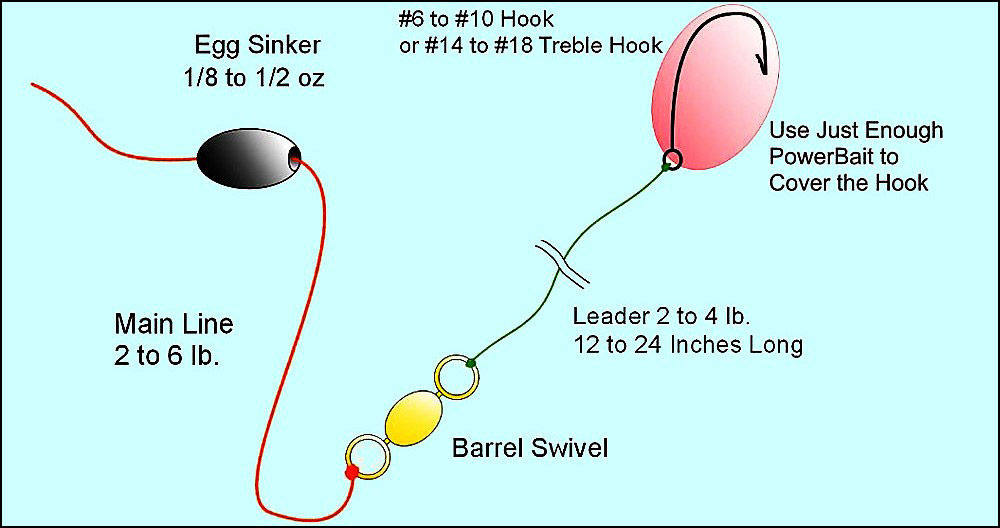
Here I would like to give you some useful advice. Always use the thin base fishing line. In my opinion, nothing more than a 0.20mm mainline is absolutely unnecessary. This is necessary since power bait is mainly used for fishing rainbow trout, other salmon like sea trout are less interested in this bait. One reason for this is that rainbow trout are mainly sourced from fish farms and used in other food sources than their relatives.
That is why this line is better than others because rainbow trout have relatively good eyesight. If the line is too thick, fish can see it underwater and are less likely to bite. Likewise, the by-catch of larger predatory fish is extremely unlikely. So make sure the color of your line is transparent or water-adapted if possible, or that the diameter when fishing for trout does not exceed 0.20 mm.
The best way to fish with the Powerbait is as follows:
- At the end of the mainline, thread a small cord (5-10 grams). Now you attach a small swivel to the main-line, which stops the leash before it reaches the hook.
- Ideally, a rubber bead should be installed between them, which slows down the blows of the reins to the spinal node when it is thrown out.
- On the other side of the barrel swivel, which should be a carabiner, you attach a pre-assembled leash with hooks of the optimum size for trout, that is, approximately 8 to 10.
- It does not matter if the leash is pre-assembled, the size of the hook is critical. Of course, the leash should be thinner than the mainline, so that in the case of suspensions, the entire assembly is not lost.
How to Use a Powerbait for Catching Trout?

As I mentioned in the previous section, trout have reasonably good eyesight. She can see your rod underwater. That is why you should not use a very heavy rod and line. You also need to choose the right place where you are going to fish. Another feature is that power bait is more successful in calm waters such as lakes than in rivers. I also advise you to fish at the right time. Check the weather in advance.
Your bait should be float. This is an important aspect. Make a Powerbait rig. And don’t forget to add synthetic bait to each hook. This is necessary to cover the hook. After that, you just need to throw it away and wait for it to sink. Then you need to rewind the slack very slowly. Wait until the line is fully learned. And then you need to place your rod where it will not move. It remains only to wait for the fish to bite. This simple technique will allow you to successfully fish for trout.
A brief guide for novice anglers:
- Select your PowerBait: Berkley PowerBait comes in a variety of forms, colors, and scents. Experiment to see which type is most effective for the trout in your specific fishing area.
- Prepare your tackle: Use a light to medium-light action rod paired with a spinning reel loaded with 4-8 lb test line for the best results.
- Choose the right hook: A small treble hook or single point hook (sizes 10-16) is typically best for trout fishing with PowerBait.
- Apply the PowerBait: Roll the PowerBait into a small ball, just big enough to cover your hook entirely. Make sure the hook point is not visible, but don’t make the bait ball so big that it impedes the hooking of the fish.
- Cast your line: Choose your location carefully – trout prefer cooler, deeper waters or areas near structures. Cast your line into these locations.
- Wait for the bite: After casting, be patient and keep an eye on your rod tip for any movements, which could indicate a trout biting.
- Set the hook: Once you feel a bite, wait a moment for the trout to take the PowerBait fully into its mouth, then set the hook with a quick upward movement of the rod.
- Reel in the trout: Keep your line tight and reel in the trout slowly but steadily. Avoid reeling too fast, as this could cause the trout to get free or could break your line.
- Handle the trout properly: If you’re practicing catch and release, make sure to wet your hands before handling the trout to protect its delicate skin and scales.
And there you have it! With some patience and practice, you’ll be well on your way to mastering trout fishing with Berkley PowerBait. 🎣
The Joy of the Catch – Mastering the Art of Reeling in a Trout 🐟
📚 Pulling in the Prize: How to Reel in Your Trout
Finally, you’ve got a bite! Your Berkley PowerBait has worked its magic, and there’s a trout on the line. But how do you ensure that the fish doesn’t slip away? Here’s a step-by-step guide:
- Set the Hook: The moment you feel a tug on your line, give a firm but gentle jerk to set the hook.
- Reel In Slowly: Start reeling in, but avoid the temptation to rush. Quick movements can cause the hook to tear free.
- Play the Fish: If the trout resists, don’t panic. Let it swim a bit, but maintain control by keeping the line taut.
- Use Your Rod: Lift the rod up and reel down, using a pumping motion to tire the trout and draw it towards you.
🐟 Catch and Release: The Respectful Angler’s Approach
If you’re practicing catch and release, it’s crucial to handle the trout with care to ensure its survival post-release. Here’s how you can do it right:
- Wet Your Hands: Always wet your hands before handling trout. Dry hands can remove the protective slime from the trout’s skin, making it vulnerable to diseases.
- Handle with Care: Support the trout gently, avoiding any squeeze or pressure on its stomach.
- Unhook Quickly: Remove the hook as quickly and smoothly as possible. Using barbless hooks or those with crushed barbs can help.
- Revive the Trout: Before releasing the trout, hold it in the water facing upstream, allowing water to flow over its gills. Once it starts to wriggle, let it go.
🔶Fishing is about respect for nature as much as it is about the thrill of the catch. As an angler, it’s our responsibility to minimize our impact and protect these beautiful creatures. 🌍 So, with your newfound skills and Berkley PowerBait, go out and enjoy the wonderful sport of trout fishing – responsibly! Stay tuned for more exciting fishing tips and adventures. 🎣
What Color PowerBait is Best for Trout?
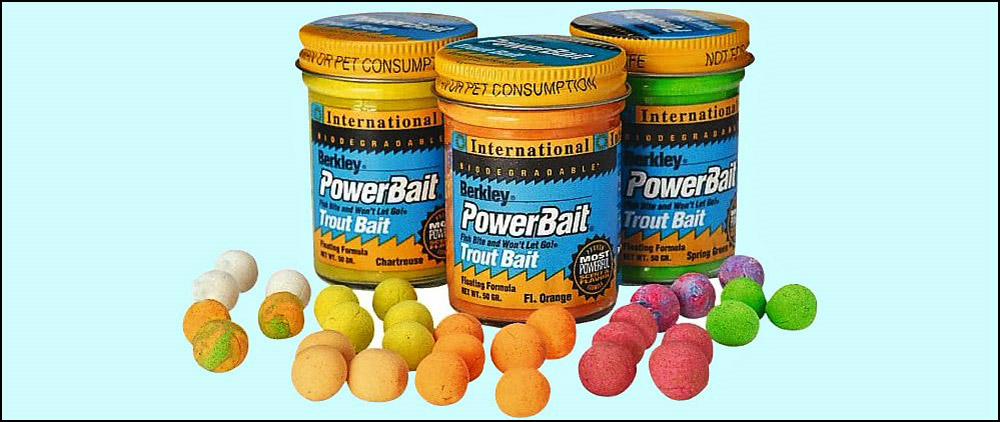
I have fished trout with the PowerBait many times. My lures were different colors and they gave different results. When it is raining or at dusk, prominent colors such as neon green, pink, or white give good results. Even when the water is cloudy, colorful lures have an edge. In particular, the UV active dough attracts fish-like magnets on a hook. Quite the opposite, on clear days or in clear water, the best catch can be done with natural flowers. Color combinations are good too. Trout perceives contrasts very well. The added glitter is meant to mimic the animals in the form of yet another fish in a shiny scaly dress. It is not yet clear why trout like to eat bait that smells like cheese or garlic.
The best color of PowerBait to use for trout can depend on a variety of factors, including the time of day, weather conditions, water clarity, and the particular preferences of the trout in the area you are fishing.
In general, trout are known to have excellent color vision and are attracted to brighter colors. Here are some commonly effective PowerBait colors for trout:
- Rainbow: This multi-colored PowerBait has been known to be highly effective due to its ability to mimic a variety of natural trout food sources.
- Chartreuse: This bright, vibrant color is highly visible and can be very effective, especially in murky or darker waters.
- Orange and Peach: These colors have proven successful in various conditions, especially during early morning and late afternoon when trout are most active.
- White and Garlic: Often considered a favorite among anglers, white PowerBait infused with garlic scent can be very enticing to trout.
- Neon Blue: While it might not mimic anything natural in the trout’s diet, neon blue can be an irresistible draw for these curious fish.
Remember, what works best can often be a matter of trial and error. Don’t be afraid to experiment with different colors to see what works best in your specific location and under different conditions. 🎣
How Often Should You Change PowerBait?
There is no specific answer here. However, based on my experience, I would advise you to do this often enough. Your bait can always shrink or go unnoticed. With frequent checking, you will have the opportunity to replace it and not waste your time. Also, when biting a fish, it is necessary to check whether all sets of hooks are in place.
Also, always check to see if the fish is off the bait after a missed hit. However, it happens that the fish does not bite, so do not rush to change the bait. Give the prey a maximum of 20 minutes more to get caught.
It happens that when checking your hook is always empty. This may be because the bait was initially incorrect or insufficiently secured. And thus fell when casting.
Where to Fish Powebait for Trout?
I envy you very much so that you can now find out the main places of the best trout fishing. I had to learn this for a fairly long period, learning from my mistakes.
Since trout loves clean and cool water, its main habitats are mountain rivers, mountain lakes, where only trout and possibly grayling are found, as well as in large lakes, where other fish species are found along with this fish. This is a very cautious and shy fish, so it is advisable to catch it in complete silence. She can be frightened off by a loud stranger voice or a silhouette of a person. In this case, she will try to go to quieter places where there are no such noises.
Knowing where to fish with PowerBait for trout is key to a successful outing. Trout prefer certain conditions and understanding these can significantly increase your chances of a catch. Here are some of the ideal spots to use PowerBait for trout:
- Rivers and Streams: Look for slow-moving pools, eddies, or backwaters in rivers and streams. Trout often rest in these areas because they don’t have to fight against the current.
- Undercut Banks and Overhangs: Trout like to hide under cut banks and overhangs to escape the sun and to ambush their prey. These spots can be particularly fruitful when fishing with PowerBait.
- Lake Inlets/Outlets: These areas can be teeming with insects and smaller fish, making them prime feeding grounds for trout. Using PowerBait in these spots can yield good results.
- Structures: Structures like fallen trees, large rocks, and man-made structures provide cover for trout, so they are good spots to cast your PowerBait.
- Deep Pools in Lakes: In the warmer months, trout often retreat to deeper, cooler waters. If you can locate these deeper spots in a lake, they can be excellent places to fish with PowerBait.
Remember, fishing regulations vary by location, so make sure you’re allowed to use PowerBait in the area you’ve chosen to fish.
Lastly, fishing is a game of patience. If you aren’t having any luck in one spot, don’t hesitate to try somewhere else. 🎣
When to Fish for Trout?
Trout can be caught throughout the year, and only the spawning season is an exception. Trout is a fish that prefers clean, cool water, which is why it can be found in mountain rivers, which are distinguished by their special purity of water. In the summer, when the water begins to warm up with the rising of the sun, the trout goes deep and waits for the sun to set and the water starts to cool again. Therefore, the best hours to fish for trout in the summer are evening, night and morning. Fishing trout during the day is a waste of time unless the weather favors it.
In the spring, it is better to fish for trout in the afternoon, and in the fall, it bites around the clock. She can only be caught in crystal clear water. If it becomes cloudy, the activity of this fish also decreases. As a rule, this is the end of May and the beginning of June. In summer, the activity of trout decreases due to the heat, but in autumn its activity increases again and it is hardly possible to be left without a catch.
Knowing when to fish for trout can be just as important as knowing where. The time of day, season, and weather can all play a significant role in trout activity and feeding habits. Here are some general guidelines:
- Time of Day: The best times to fish for trout are typically early morning and late afternoon, as this is when they are most likely to be feeding. Trout often retreat to deeper water during the heat of midday, so fishing can be more challenging during this time.
- Season: While trout can be caught year-round, spring and fall are often the most productive seasons for trout fishing. In the spring, trout are feeding heavily after a long winter and before spawning. In the fall, they feed to prepare for the coming winter.
- Weather Conditions: Overcast or mildly rainy days can be excellent for trout fishing as the cloud cover can make trout feel more comfortable feeding in shallower water. In contrast, bright sunny days might require you to fish deeper.
- Water Temperature: Trout prefer water temperatures between 50-68°F (10-20°C). If the water is too hot or too cold, trout feeding activity can slow down.
Remember, these are general guidelines and trout behavior can vary depending on the specific species and local conditions. As always, observing your environment, experimenting with different times, and gaining experience will help you find the best fishing times in your specific location.
Powerbait Trout Fishing Tips
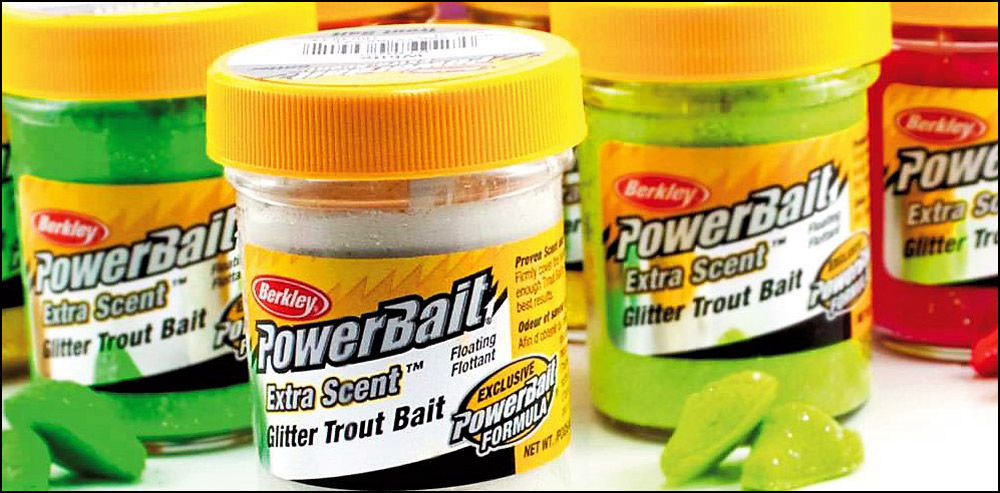
Above all, PowerBait has revolutionized bottom fishing with floating bait. Powerbait is denser than water so it floats. That is why it is necessary to use weight when fishing. Remember to keep the bait below the surface of the water.
Match the Hatch: Observe what the trout are naturally feeding on in your fishing spot and try to match your PowerBait to mimic that food source in size and color.
Try Different Colors: Trout can be finicky and might prefer different colors on different days or even different times of the day. Don’t hesitate to switch up the colors of your PowerBait if one isn’t working.
Use the Right Amount of PowerBait: You want to use just enough PowerBait to hide your hook completely but not so much that it becomes difficult for the trout to bite.
Fish at Different Depths: Trout can feed at varying depths depending on the time of day and weather conditions. Experiment with different depths to find where the trout are feeding.
Be Patient: Once you cast your PowerBait, let it sit for a while. Trout will often take a few bites before fully taking the bait.
Use Light Gear: Trout have excellent eyesight and can be deterred by heavy fishing line. Use a light 2-6 lb test line for best results.
Check Your Bait Regularly: Trout might nibble the bait off your hook without you noticing. Regularly checking and refreshing your bait can increase your chances of a catch.
Play with Scent: Some PowerBaits come scented, which can be very attractive to trout. Try different scents to see what the trout in your area prefer.
🔶Using the right amount of Powerbait is also important. You should use the amount that covers the triple hook.
Remember, fishing is as much about the experience as it is about the catch. Enjoy your time on the water and remember to respect the environment and local fishing regulations. 🎣
Note: Error When Fishing With Powerbait
One mistake many who actively fish with power baits make is that they fish with a hook that is too big. I fish myself with a 20 or 22 wooden hook. This makes the bait thinner, resulting in a livelier pass through the water. In my opinion, it is best to start with the shape of the tail. To do this, you need to take a small piece of bait and form a ball around the hook. Then fold it in your palms so that you get a wedge-shaped tail. Press lightly on the tip of the bait. This leads to the fact that he has a living movement in the water. The length of the formed bait should be 5-7 cm.
Powerbait Ice Fishing And Passive Fishing
During the winter months, passive fishing on the Powerbait can pay off as the water temperature does not make the fish particularly active. Usually, the bait should be 30-70 cm above the ground. Although this is called passive fishing, you should still be active until you find fish. After you have cast the rod, it doesn’t take more than 10-15 minutes to quietly pull out the bait 2-3 meters.
Do this until your bait is 3-5 meters from the lakeshore. Your next throw looks like this: throw a new line over the bait. Do this until something moves in the water. In winter, fish often remain in the same areas.
So, you know in which area to cast the bait. It is not for nothing that baits are classics of Danish trout lakes. Many fish were tricked into this bait during their last meal. A visit to the trout lake is now not only fishing but also enjoying nature and relaxation. However, we feel good when we fish to take home.
The Secret to the Catchy Powerbait
Some anglers believe that the effectiveness of the paste is not so great, but most often this is due to its incorrect use. There are some subtleties when fishing for trout:
- In no case should the paste be frozen, and in winter it is best to keep it near the body, otherwise, it may lose half of its qualities in the cold.
- To prevent the PowerBait from disintegrating during the cast and in contact with the water surface, first press down well with your fingers.
- The chances of a successful catch increase in proportion to the amount of bait (the more, the better, of course). Trout can eat an amount of food equal to one-third of their weight, so in this case, it is better not to save.
❓ FAQ: How to Catch Trout with Berkley PowerBait
🔶Remember, if you have more questions or need further assistance, feel free to drop a comment or get in touch with us. 🎣
The Final Cast – Reflecting on the Thrill and Challenge of Trout Fishing
Fishing, as we all know, is not just a sport or hobby – it’s a lifestyle, an unspoken bond between you and the serenity of nature. 🌿 And when it comes to trout fishing, it truly embodies a blend of patience, skill, and thrill.
Sure, the road to mastering trout fishing with Berkley PowerBait has its challenges. From understanding the elusive trout to perfecting the cast, to reading the waters and finally, reeling in the catch – it’s a journey filled with learning curves. But isn’t that what makes the end result so rewarding? 🏆
I strongly encourage you all, whether you’re a seasoned angler or a newbie embarking on your first fishing expedition, to experience the magic of Berkley PowerBait. Feel the rush of adrenaline when the trout takes the bait, the battle between you and the fish, and the triumphant joy when you finally reel it in. It’s not just about catching fish – it’s about immersing yourself in an experience that’s both exciting and peaceful at the same time.
As we cast our lines and reel in our thoughts, we can only marvel at the wonders of fishing and how it teaches us to respect and connect with nature. 🌍
Using PowerBait is a great way to catch trout. I would advise you to fish for trout where you are most likely to succeed. I have described these places in this article. Today, on a trout lake, you practically won’t find an angler who doesn’t have at least two or three different colored power baits in his pocket. Meanwhile, the choice of Powerbait is huge.
Berkley is constantly expanding its range, you can find pastes from other manufacturers in stores. There are bright, dark, multi-colored, with sparkles and without, some smell like fish, others – garlic, granules, or cheese. I hope this article helped answer your question on how to use power bait.
But remember, anglers, our journey doesn’t stop here. In the next article, we will explore how to conquer another species with Berkley PowerBait. Can you guess which one it might be? Hint: It’s known as the ‘clown of the sea.’ 🤡 So stay hooked, and keep your lines tight until then! 🎣
🔶Until next time, happy fishing, and may the fish be with you! 🐟💫
🎣 Cast Your Stories Our Way!
Anglers, now it’s your turn to take the spotlight! Have you had a memorable encounter with a trout that got away or a legendary catch that still makes you grin with pride? We would love to hear your tales from the water’s edge!
Share your trout fishing experiences, your victories, and even those ‘almost got it’ moments in the comments below. 📝 Maybe you’ve got a secret trick up your sleeve that’s a game-changer in catching trout? Or perhaps you’ve discovered an unusual spot that’s a hidden trout paradise? Don’t hesitate to spill the beans!
Fishing isn’t just about the individual—it’s about the community. It’s about learning from each other and celebrating together. So let’s create a hub of knowledge and experiences, where every angler can find a tip or a tale that inspires them to keep fishing. 🙌
📩 Get Hooked on Our Updates
Before you cast off, make sure to subscribe for future updates and articles. From fishing tips and gear reviews to captivating tales and news from the angling world – we’ve got it all! 🌐
Just click on the subscribe button and become a part of our angling community. You’ll be the first to know whenever we release a new article or update. Trust us; you don’t want to miss out on the exciting stuff we have lined up for you. 💌
So, are you ready to embark on more fishing adventures with us? Subscribe, share, and stay hooked! 🎣
🔶Thank you for your time, tight lines, and remember – the next cast could be the catch of a lifetime! 🏆
Tags: #how to use powerbait for trout fishing / #how to use powerbait / #best powerbait setup for trout fishing / #ways to use powerbait / #berkley powerbait natural trout bait / #how do rig power bait / #berkley powerbait natural scent trout bait

I live in Tenerife (Canary Islands) for the last 10+ years and share my daily fishing experiences on my website. Many years of personal experience as a fisherman and the vast experience of my friends allow me to write professionally on any fishing topics (from choosing a flashlight and equipment to deep-sea fishing).
All of my advice is based on practical real-world experience and will be useful to both novice anglers and professionals. Read more about the author.
Affiliate Disclosure: FishReeler.org sometimes gets paid for listings, through sponsors or affiliate programs like Amazon, Ebay, Cabelas, Bass Pro Shop, Shimano, Daiwa, Rapala, Renn, Okuma, KastKing, etс. Clicking a link helps keep FishReeler.org free, at no extra cost to you!
About the author: Each article is verified by the fishing expert Sergio Smirnoff. The articles are written by professional and amateur fishermen with 20+ years of fishing experience.
Note: The views and opinions expressed in this article are those of the authors and do not necessarily reflect the official policy or position of any agency. The articles are for informational purposes only, share your opinions in the comments and join the fishing discussions, let's share our fishing experiences together!

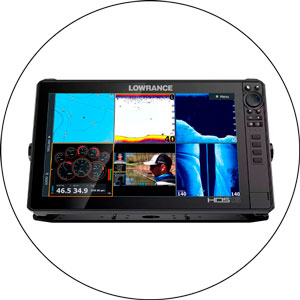
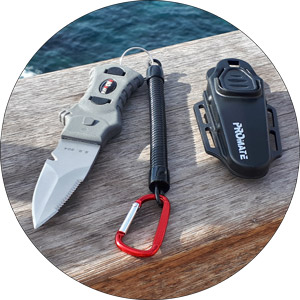
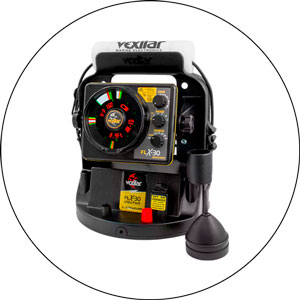
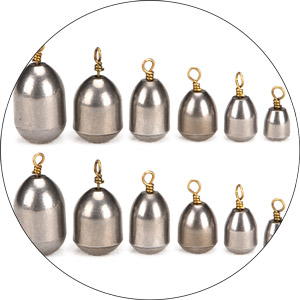
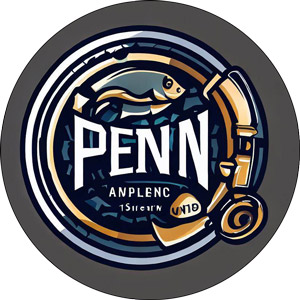
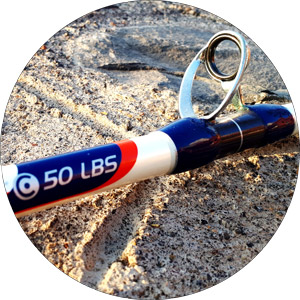
Very informative! I learned some new tips for rigging Powerbait and how to choose the right color for different fishing conditions. Is Powerbait dough effective in catching trout?
Yes, Powerbait dough is effective in catching trout and has been used successfully by many anglers. However, the effectiveness of Powerbait or any other bait varies depending on several factors such as fishing conditions, water temperature, and the feeding habits of the trout.
The Powerbait dough is known to be effective in catching trout. To use it, one can try using a sliding-style bait rig with a small treble hook, size #12 or #10. Start by making a ball with the dough and pressing the hook into it, then round and pinch off the excess so the ball just barely covers the hook.
Use a decent sliding sinker or a full bubble and aim to cast it out to about 20 feet deep. Let the reel free spool as it sinks and then reel in slack so that the swivel is against the sinker.
Pull about 8 inches of drag out so that the line isn’t tight but the sinker is still against the swivel, giving the fish 8 inches to run before feeling the hook.
The bait should float just above the weeds, with around an 18-inch leader being a good starting point, but in the summer, a 3-foot leader may be used. The garlic-flavored rainbow and corn are considered to be the best baits.
It’s also recommended to bring a red hook out and plan to keep some fish or even smash the barbs down for catch-and-release fishing.
Stocked rainbow trout in lakes can be caught effectively using Powerbait dough. However, the success rate can vary depending on the day, as sometimes they may hit spinners and not touch the dough, and vice-versa.
The author has had better luck with eggs, but this may be due to chance. Eggs are preferred as they do not slide off the hooks over time. If the fish are not biting the Powerbait, it is possible that there may be an issue with the presentation, such as depth, line weight, rigging, or dough size, and adjusting these factors can make a difference.
Great article! It’s a helpful guide for all trout fishing enthusiasts who are looking to improve their techniques with Powerbait. The author’s preferred method for fishing with trout worms or magnets is using a 10 lb braid with a barrel swivel, a split shot above it, and varying the leader length (4lb clear mono) with a trout magnet hook on the end.
The technique involves ticking the bait along the bottom and learning to distinguish a bite from a rock. If in doubt, the author suggests setting the hook, as the worst case, one may just need to retie.
The author prefers the white body with a pink head or pink body with a white head for trout worms and has found that hook color doesn’t matter, although occasionally, other colors such as orange/white head have been successful, it’s rare compared to the white/pink.
This is a must-read for all trout fishers. I’m definitely trying some of the techniques mentioned in this article on my next fishing trip. Do Powerbait lures (e.g. Power eggs, Power worms, Powerbait nuggets) work as well for wild trout as they do for stocked trout?
Yes, these baits can be effective for trout fishing. It depends on the specific fish species, their feeding habits, water conditions, and personal preferences of the angler. It’s always a good idea to try different baits and techniques to determine what works best in a particular location and situation.
Trout are known to be indiscriminate feeders, sometimes even sucking in small twigs. Power eggs, Power worms, and Powerbait Nuggets can be effective baits for catching trout, but their effectiveness also depends on various factors such as species, feeding habits, and water conditions.
However, when using these baits with barbed hooks, there is a higher risk of causing harm to the fish by snagging their gills or gut. For this reason, some anglers opt to not use barbed hooks when fishing for wild, catch-and-release trout.
Instead, they may prefer to use corn as bait, especially when fishing for stocked rainbows with the intention of keeping them for consumption.
Experience and expertise are key factors in successful trout fishing. While bait fishing may be easier, consistent hookups using a fly rod can be achieved with a deeper understanding and mastery of the sport.
An angler who knows how to trout fish can explore streams with either a fly on a fly rod or a spinner on a spinning rod and still have the same level of success as a bait fisherman. Additionally, using a modified spinning setup, such as a fly rod with changed guides for spin-cast and a trigger spin reel, can enhance the experience of throwing spinners.
Great job on the article. The step-by-step instructions and tips on using Powerbait are very clear and easy to follow. Bait fishing can be uninteresting, but it’s worth mentioning that Powerbait does work. If you’re good at casting light lures, trying them out is recommended. Alternatives to bait fishing include using spinners, Trout Magnets, and small jerk baits like the 06-size Rapala X-rap.
For those who prefer using a bobber and bait, using weighted bombers is highly recommended. They are taller and have a small weight at the bottom, which allows for greater accuracy and distance when casting, especially in windy conditions. As someone who mostly fishes for bass, it’s recommended to seek advice from a dedicated trout fisherman for more specialized information.
I’ve been using Powerbait for years, but I never knew some of the secrets shared in this article. As a dedicated trout fisherman, I have a variety of techniques that work for me. These include using worms with a bobber, Powerbait about 3-4 feet off the bottom, small Jake’s lures, or my personal favorite, a half silver half blue Cast Master. I’ve also had success with small tube jigs in different colors.
Worms are my go-to bait, as trout have a natural affinity for them. During the evening, when trout often come to the surface to feed on bugs, matching the bugs with a fly can result in a high catch rate using a fly rod or a fly and bubble technique with a regular rod. I always carry my fly rod with me for a full day of fishing, as you never know when it may come in handy.
It’s worth noting that Powerbait is effective on stocked trout but may not work as well, if at all, on natural trout. Thanks for the insights!
As a bass fisherman, I sometimes take the kids for trout fishing. Powerbait proves to be effective and I often catch fish while others don’t. My secret is to use a small egg hook, light line, and sinker, and to use the least amount of bait needed to cover the hook – about the size of the tip of my finger. Unlike others, I don’t use heavy weights or big hooks and avoid using excessive bait. While catching on spinners is preferable, I still find Powerbait a reliable option.